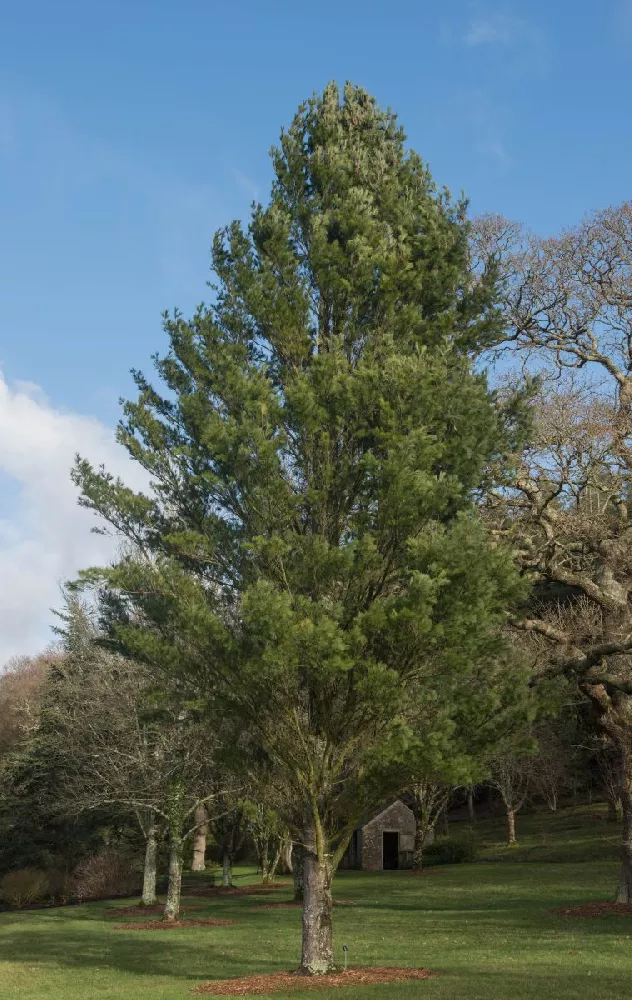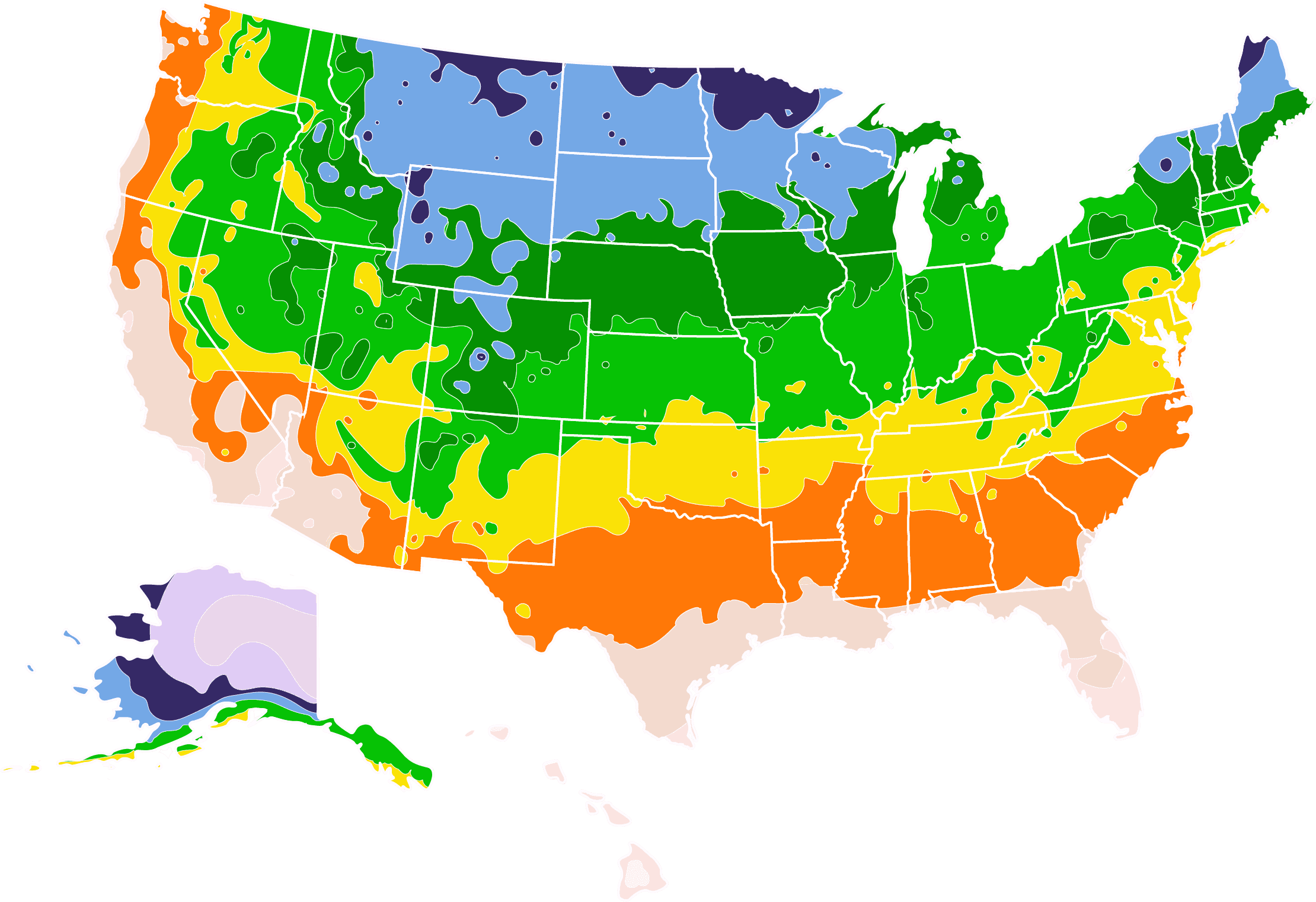- Home >
- Ornamental Plants >
- Eastern White Pine Trees
Eastern White Pine Trees for Sale
The eastern white pine (Pinus strobus) is a coniferous tree species known for its blue-green needles and valuable timber. Native to Eastern North America, the species enjoys a wide range throughout the Appalachian mountain range and the Great Lakes region. The eastern white pine tree creates an excellent natural windbreak and has a considerably fast growth rate.
- One of the most common species in the forests of Canada and the eastern U.S.
- Trees planted in ideal conditions can reach heights over 80 feet.
- As a pioneer species, eastern white pine is one of the first species to repopulate a disturbed area.
Enter your zip code to find nearby stores that may carry this plant.
Plant Care
Sunlight

Aim to give this plant four hours or more of direct sunlight per day.
Watering
Water young plants weekly. Mature specimens may need no water at all depending on local rainfall.
Fertilizing

Use a fertilizer that is acidic and has plenty of nitrogen in the spring.
Planting and Care
Planting instructions
In warmer climates, the tree enjoys partial shade. In cooler temperatures, full sun is recommended. The eastern white pine will not do well in clay soils and requires an acidic pH. To plant, dig a hole the depth of the root ball and twice as wide. Place the tree upright in the hole and backfill with dirt. Tamp the soil down lightly and give the transplant a deep drink of water.
Watering and nutrients
Although the species is drought-resistant, you will want to keep young eastern white pines well-watered. To retain moisture during this stage, add a layer of mulch around the base of the tree. After the trees establish themselves, they do fairly well in dry soil, as long as temperatures stay cool. Mature trees may need water occasionally or not at all. Fertilize mature trees in the springtime with a highly-acidic evergreen fertilizer.
Pruning
As is the case with many evergreen species, you should not prune eastern white pine prior to winter. Doing so does not give the tree enough time to heal its wounds before the harsh winter weather arrives. Instead, prune in late winter or early spring. This will free up valuable energy for the tree and help stop fungal diseases before they spread. When planting this tree as a hedge, you can have some success shearing the foliage to create a distinct hedge shape.
Pests and diseases
Weevils are attracted to the eastern white pine and can be difficult to control on larger trees. Use a heavy treatment of pesticide (preferably a bacterial, non-chemical formula) during springtime to combat this pest problem. Fungal diseases are common on eastern white pines, including blight and rust. The white pine blister rust is a deadly fungus and can spread quickly between trees. If you notice this fungus, remove the infected areas promptly and burn the branches away from other pine trees.
FAQs
How large do eastern white pine trees grow?
Mature eastern white pine trees can reach massive heights of 50 to 80 feet. They grow in a somewhat irregular shape, with a mature width of 20 to 40 feet at the base. The eastern white pine is a fast-growing tree — expect annual growth rates of two to three feet. Due to its quick growth and large size, the tree is often used as a windbreak in landscaping.
How can you identify an eastern white pine?
Eastern white pines are known for their blue-tinted needles that appear soft and slender. The needles form in bundles of five and are three to five inches long. The pinecones are three to six inches long and feature a tapering, conical shape. While many other pines hold on to two or three years worth of needles, the eastern white pine will drop a few of its oldest needles each year.
Where do eastern white pines grow?
The eastern white pine tree enjoys well-drained soil. In the wild, it is often found on slopes, ridges, and bluffs with natural drainage. Its natural range spans from the Northeastern U.S., down through the Appalachian Mountains, and across the Great Lakes region around Michigan and Minnesota. The eastern white pine was one of the most harvested trees in the Northeast timber industry, prized for its soft, easily-workable wood. Virgin, old-growth stands still survive to this day — the trees are protected in some areas, including the Great Smoky Mountains National Park.
How far apart should I plant eastern white pine trees?
Individual eastern white pine trees should be planted at least 20 feet away from other trees and shrubs. The root system spreads horizontally, and the trees will end up competing for nutrients and water if planted too close. Some gardeners and landscapers take a different approach, planting the trees relatively densely at first before thinning out the weakest trees a few years later. The trees can be planted closely to create a hedge formation, but they will not grow as tall or live as long.
Compare Similar Products
Customer Reviews
 Great trees.
Great trees.Great quality of trees. I wish they could ship larger specimens so I had another year or two of growth.
 Love it...still small, but very excited for its future!
Love it...still small, but very excited for its future!Very helpful...highly recommend
 Eastern White Pine
Eastern White PineThje White Pine arrived very vigorus looking. I am quite happy with my ourchase.
 Eastern white pines
Eastern white pinesI am looking forward to my 3 pines to provide beauty and privacy in my backyard.
 Eager
EagerThese trees want to grow !
 White pine trees
White pine treesMy trees are doing well.
 Eastern white pines
Eastern white pinesOverall I had a great experience. The trees look great, but left off one star as 2 of the trees were damaged in shipping.









